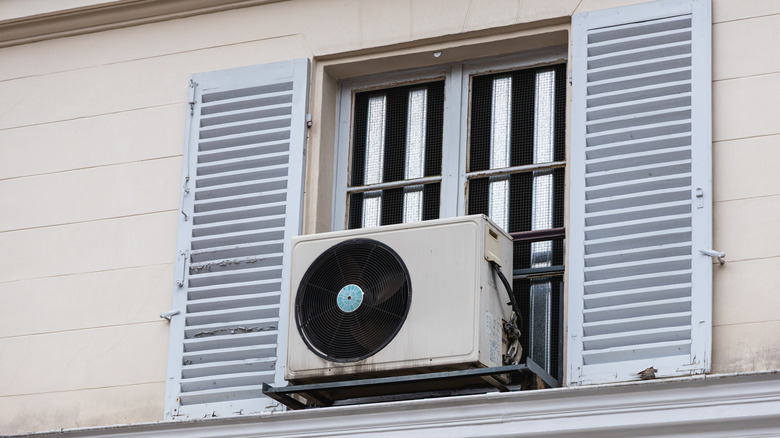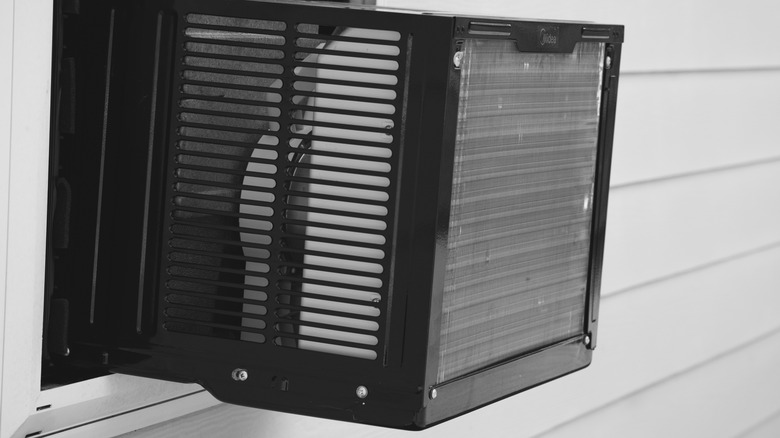Here's Why Window AC Units Have To Actually Be Mounted To A Window To Work
Why do window ACs actually need a window? On the surface, it feels unnecessary — after all, the unit is clearly designed to blow cold air from the front. Why can't you just set it on the floor like a space heater, plug it in, and let it blast? The answer has everything to do with how things work behind the scenes. For homes without central AC or a through-the-wall unit, a window AC remains the most straightforward way to keep a room cool. But an air conditioner isn't just a "cold-air box." It doesn't manufacture cool air out of thin air.
Instead, it's a system that pulls heat and moisture out of your room, and then has to dump all of that somewhere else. That "somewhere" is supposed to be outside your house. That's the process that leaves you with cooler, "conditioned" air. If you set the unit in your bedroom with no window access, it'll cool one side while dumping the exact same amount of heat right back in, which is about as helpful as trying to dry your hands while holding them under a running faucet. The window is the literal vent through which the hot air and condensation escape.
But, why the window?
If your HOA isn't exactly a fan of window ACs, you might be tempted to think, "Can't I just mount the unit somewhere less obvious?" Not really. A window AC doesn't just happen to sit in a window — it needs the window to function at all. The frame does three jobs at once. Firstly, it allows proper drainage. ACs pull a surprising amount of water from the air. The outward tilt lets condensation drip harmlessly outside instead of pooling on your floor. Secondly, it bears the weight. These units can be 40 pounds or more, hardly something you want toppling mid-July.
Thirdly, and most importantly, it creates a sealed barrier so outside heat doesn't creep back in, and it can channel all the hot exhaust air and drips of condensation outside where they belong. Skip the window, and you lose that airtight divide between indoors and outdoors, meaning you don't get the cooling that's the entire point of this endeavor. Instead, you get noise, wasted electricity, and the uncomfortable realization that your "air conditioner" isn't conditioning much of anything. It's basically a fridge with the door left wide open.
What about portable ACs?
Now, you might ask: what about portable AC units? Don't they get around this problem? Kind of. Portable models do exist, and they're right up there with window ACs as some of the most affordable cooling systems you can get for your home. But while they do stand fully inside your room, they still have to vent hot air outside through a hose. That's why they come with those adjustable panels you wedge into a window or into a sliding door gap. So even the so-called "window-free" ACs still need an exit route for the hot exhaust. The main difference is how much real estate they steal from your window. A portable unit takes up just a sliver, while a window unit hogs the whole ledge.
At the end of the day, cooling always comes with a catch (and a hatch). Whether it's a bulky window box or a portable machine with a hose, your AC has to push heat outside. We've come a long way from hand fans, but no air conditioning system fully functions indoors — at least, not yet. Whichever setup you land on, don't skip the maintenance. Simple steps, like draining your AC hose properly, go a long way in keeping your unit running smoothly and your space comfortably cool.


